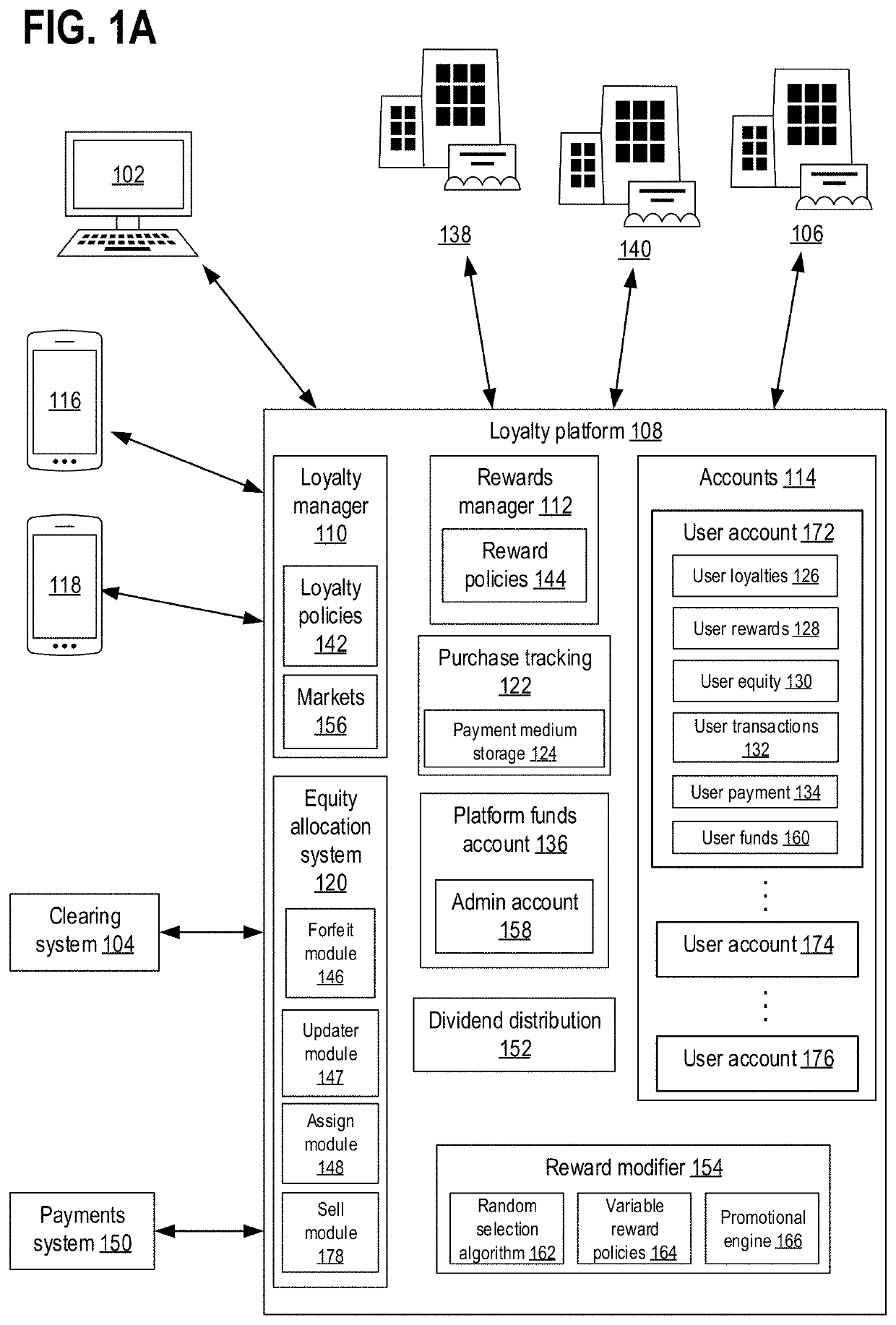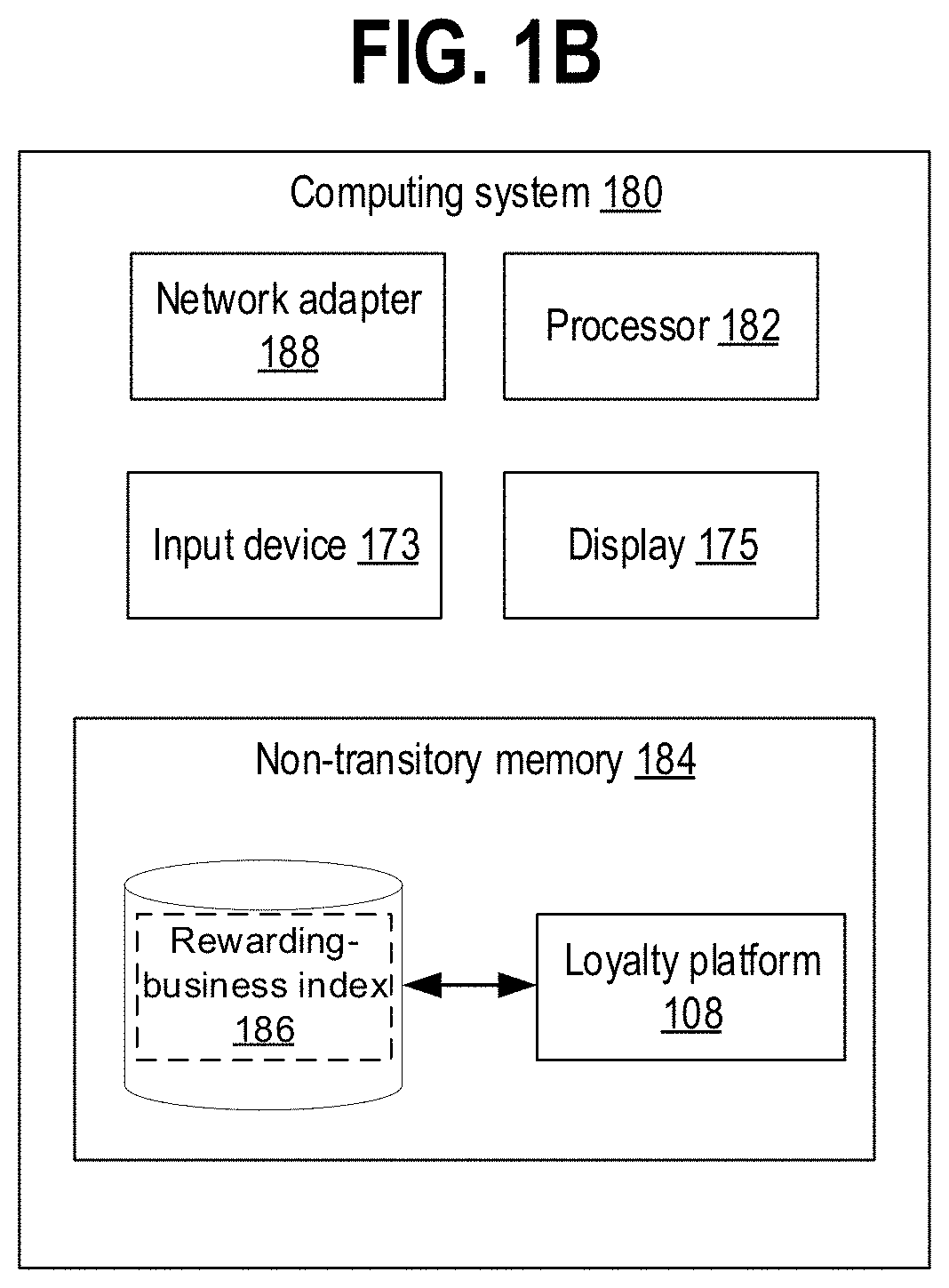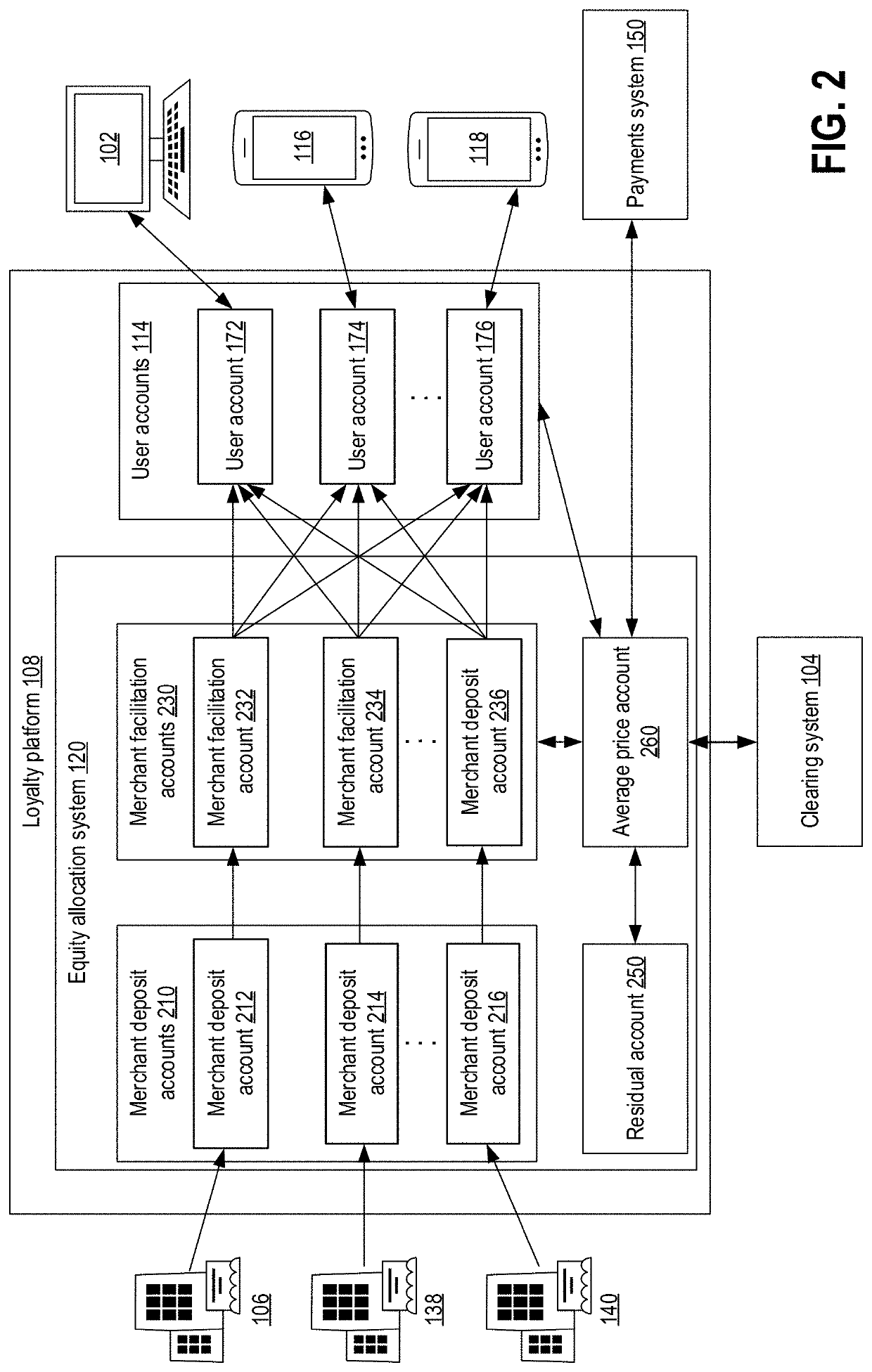Distribution of fractional equity rewards based on purchase behavior
a fractional equity and reward technology, applied in the field of fractional equity rewards, can solve the problems of limiting the success of conventional reward programs such as mail-in rebates or reward points based programs, putting an additional burden on users, and requiring user record effort, so as to reduce the probability of reward delay, reduce the amount of shares, and reduce user frustration
- Summary
- Abstract
- Description
- Claims
- Application Information
AI Technical Summary
Benefits of technology
Problems solved by technology
Method used
Image
Examples
Embodiment Construction
[0032]The following description relates to systems and methods for a loyalty platform providing fractional equity rewards to users based on tracked user loyalty purchases (the term “user” or “users” is herein used interchangeably with the terms “customer” or “customers”). Examples of a loyalty platform and related features are disclosed in U.S. Provisional Patent Application No. 62 / 697,284, entitled “DISTRIBUTING SUCCESS-LINKED REWARDS TO CUSTOMERS OF PRIVATELY HELD COMPANIES,” filed on Jul. 12, 2018, and U.S. Provisional Patent Application No. 62 / 543,884, entitled “DETERMINING EQUITY REWARDS BASED UPON PURCHASE BEHAVIOR”, filed on Aug. 10, 2017. The entire contents of each of the above-identified applications are hereby incorporated by reference for all purposes. The fractional equity rewards may comprise amounts of fractional shares of stock. As used herein, the terms fractional equity rewards, fractional shares of stock, fractional equity, fractional shares, fractions of Exchange...
PUM
 Login to view more
Login to view more Abstract
Description
Claims
Application Information
 Login to view more
Login to view more - R&D Engineer
- R&D Manager
- IP Professional
- Industry Leading Data Capabilities
- Powerful AI technology
- Patent DNA Extraction
Browse by: Latest US Patents, China's latest patents, Technical Efficacy Thesaurus, Application Domain, Technology Topic.
© 2024 PatSnap. All rights reserved.Legal|Privacy policy|Modern Slavery Act Transparency Statement|Sitemap



